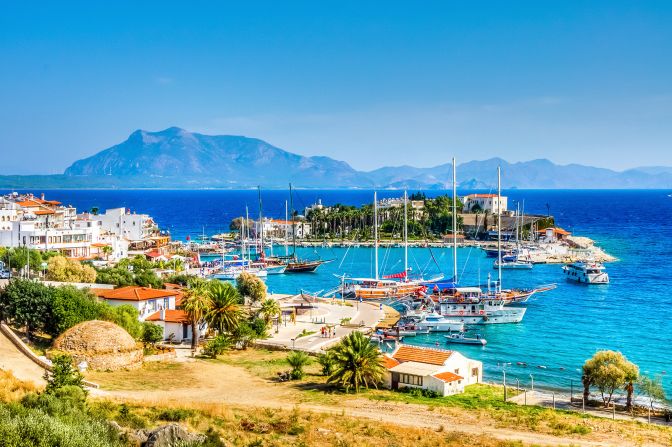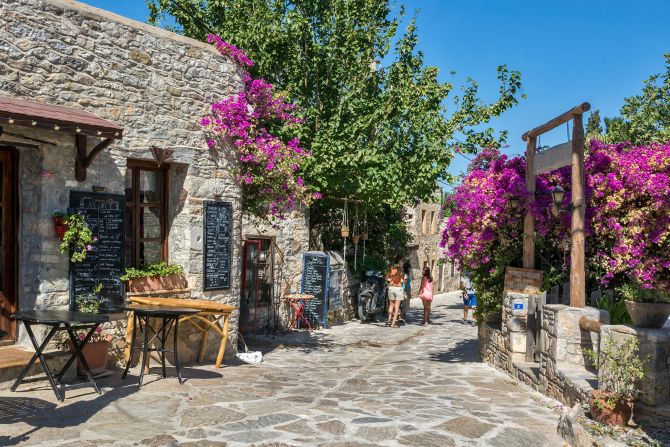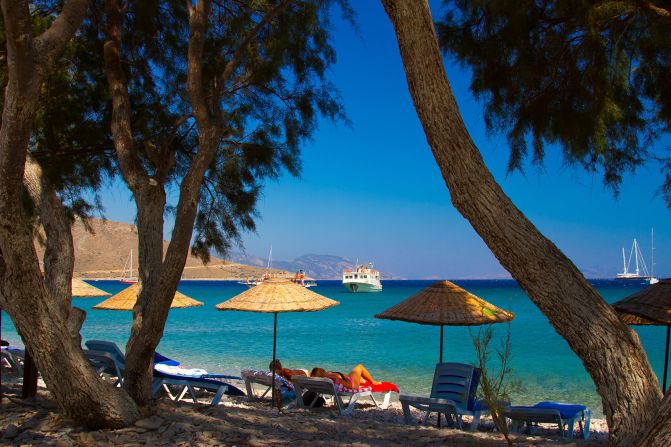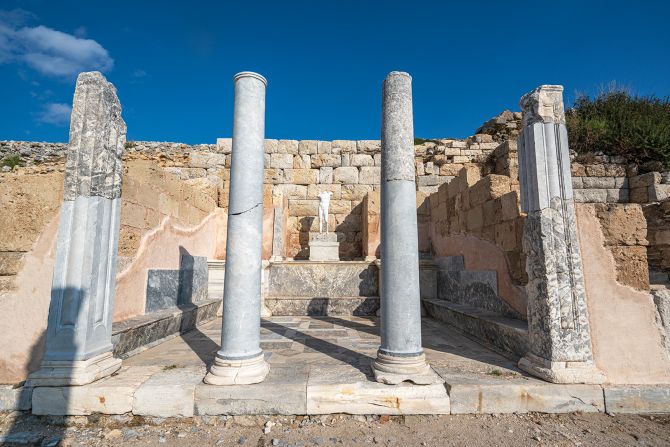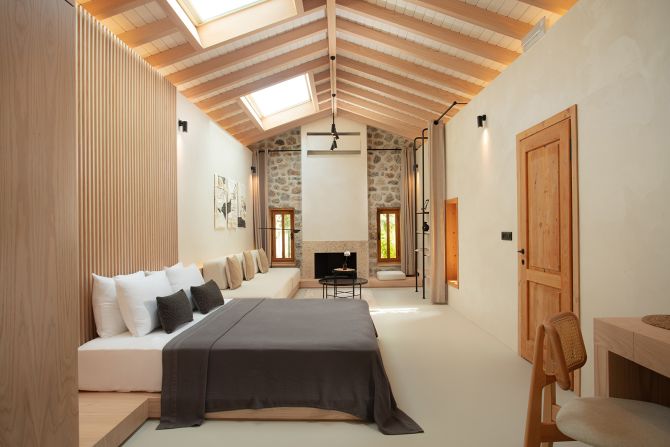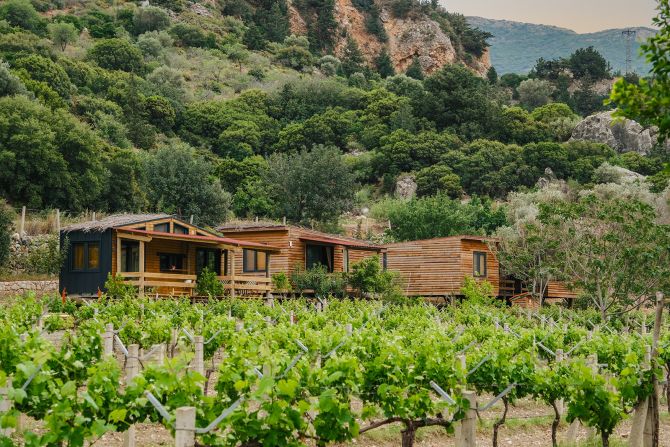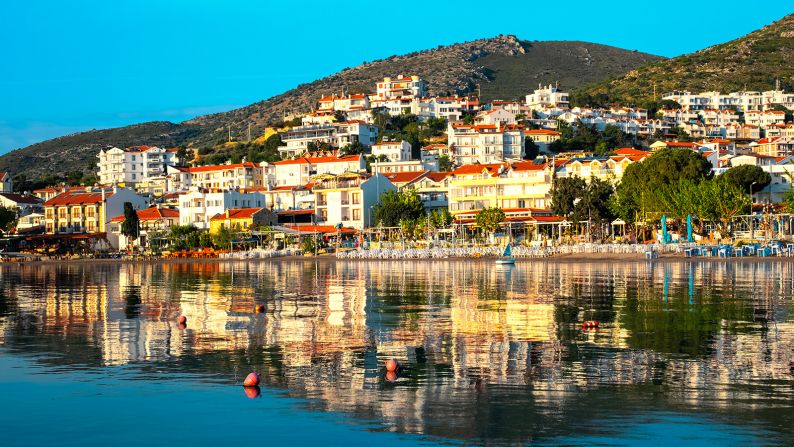Editor’s Note: This CNN Travel series is, or was, sponsored by the country it highlights. CNN retains full editorial control over subject matter, reporting and frequency of the articles and videos within the sponsorship, in compliance with our policy.
With untouched and natural rugged scenery, forested with pristine bays on both sides, the Datça peninsula feels a world away from the touristy towns of this popular corner of the Med.
The long and narrow headland, stretching between the Aegean and Mediterranean Seas in southwestern Turkey, is mostly uninhabited and wild, very different from nearby Marmaris and Bodrum.
Strict laws about construction have protected Datça from large-scale tourism projects, leaving its eponymous small port town, located around midway on the peninsula, rooted in the past.
Datça port is the epicenter of local life. Fish restaurants with simple wooden tables and chairs line the waterfront, while little shops selling local goods and modern cafes fill the backstreets that run up and down the hilly residential landscape.
On the slopes, flashes of Aegean blue can be seen from between the orange-roofed white houses overlooking the harbor. The carefree rhythm of daily life is undisturbed by mass tourism.
Beyond the port, nine small villages lie scattered around the peninsula. Routes through their narrow streets lead to one of the main local attractions: the ruins of Knidos, once a Greek city in what was the ancient region of Caria.
Located on Datça’s westernmost tip, the historic site lies at the end of a road that snakes past fragrant pine forests, towering mountains and orchards where the famous prized local almonds are harvested.
In the summer, Turkish tourists flock to the major bays, such as Palamutbükü, with its long pebbly beach, aquamarine sea and rows of small family-owned restaurants.
Locals prefer to spend their days at one of many untouched coves, some of which only they know about.
A 10-minute drive south from downtown, the narrow streets of Datça’s old town, with its historic stone houses, cafes and shops, are almost always crowded. The former summer home of revered Turkish poet, Can Yücel, attracts visitors.
Where to stay
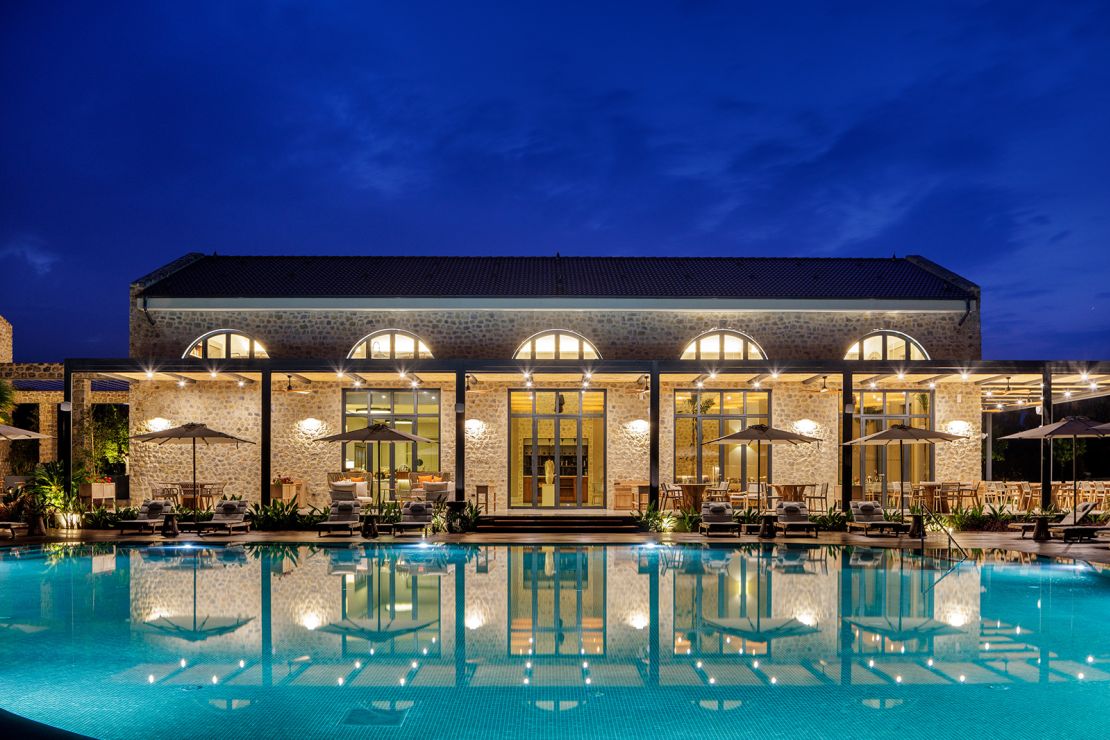
After a stroll down Datça town’s waterfront boardwalk, known as the Sevgi Yolu (Love Path), one of the peninsula’s newest accommodations comes into view, bordered by the ancient ruins of a bathhouse, which was discovered during construction.
A collection of two-storied houses with local stone masonry facades, airy minimal rooms and a restaurant serving contemporary Aegean dishes, Palaia Hotel bills itself as a modern and sustainable interpretation of traditional Datça architecture and culture.
“I’ve been in love with this peninsula since 2000, and when I stumbled on this property, I knew I wanted to create a peaceful place, harmonious with its surroundings,” says Ismet Tekinalp, the owner of Palaia.
“One of the most precious things in Datça is the quality of its air, I wake up every day just breathing in this pure oxygen.
“I think people who come here need to see the ancient ruins of Knidos, explore beautiful coves such as Hayıtbükü, taste the fantastic local Datça almonds and pine honey, and take part in the annual Almond Blossom Festival in February.”
In the middle of Datça’s old town, a collection of traditional stone houses set in a garden serves as a modern boutique hotel. The Ultava Houses have four rooms with high ceilings, small stylish touches and terraces overlooking the lush garden.
Further away from Datça town, in the small village of Cumalı, Gocakapı’s visitors seeking an even quieter escape can stay in traditional stone houses offering the feeling of being at home in the middle of Datça’s mountainous scenery, surrounded by olive groves and almond trees swaying in the breeze
Local flavors
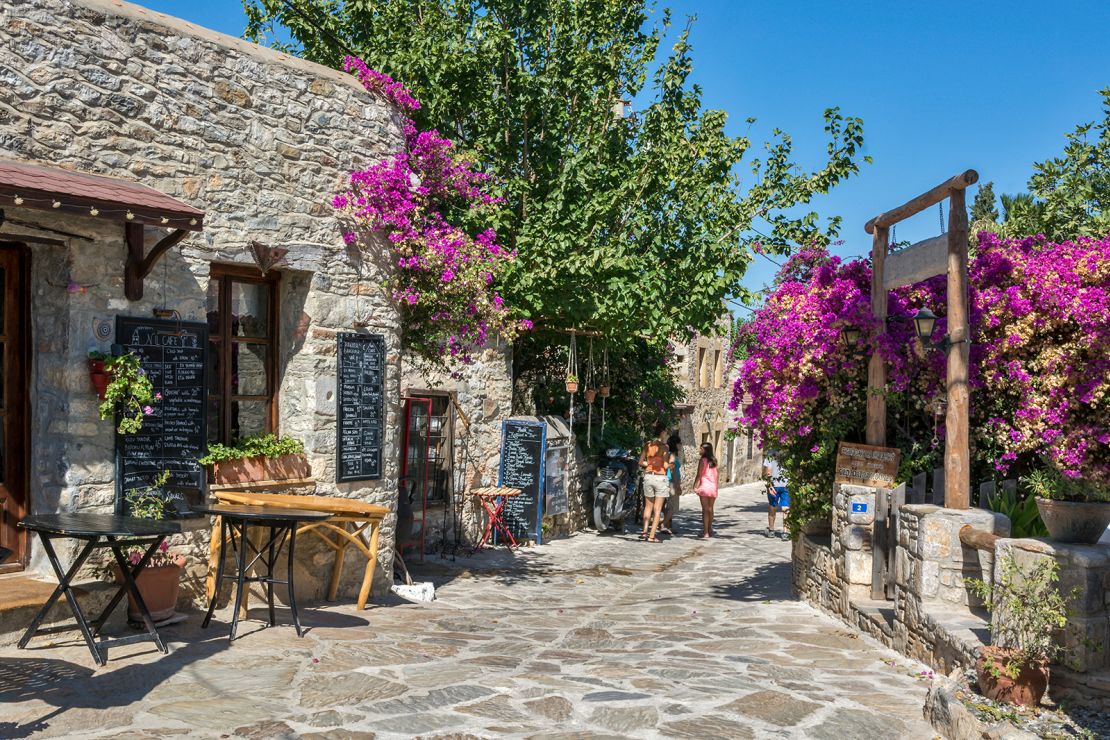
In downtown Datça, shops such as Pehlivan and Datça Köy Ürünleri sell local almonds in every form imaginable. Shelves upon shelves are stocked with packaged nuts, which are sold raw, roasted, blanched, in their shell or as almond butter, flour, marzipan, halva and oil.
At Meşhur Datça Badem Kurabeyicisi, the smell of freshly baked almond cookies fills the street. The glass display has everything from plain almonds to cookies filled with chocolate, green apple and walnuts or topped with raspberries or blackcurrants.
The popular local specialty bal badem, almond brittle with honey, is sold at Kaya Balları, which specializes in local honey, including ones made from pine and almond blossom. Bal badem is a heavenly ingredient in local thick ice cream made from goat’s milk. Tekin Usta, a small shop in Datça’s old town, serves the best.
Located in one of the world’s oldest wine-producing regions, Datça also has a small wine scene worth exploring. Founded in 2011 by the Isleyici family, the Datça Vineyard and Winery offers wine tastings as well as a menu of Italian dishes that pair perfectly with their vintages such as cheese tortellini with sage sauce or pizza with braised lamb.
In the small village of Yaka, about a 30-minute drive west of town, many visitors drive past Yakamengen without a second glance. However, inside this restored small olive mill, locals have created a unique restaurant where dishes are composed mainly of endemic plants, vegetables and seafood.
Just a few steps away and right across the UKKSA (International Knidos Culture and Art Academy) and its sculpture garden, Hestia focuses on dumplings from all around the world. Close by, its sister branch, Hestia Mey, also serves dumplings as well as classic meyhane (Turkish tavern) fare such as stuffed zucchini blossoms and fried and diced liver.
Tango and tranquility
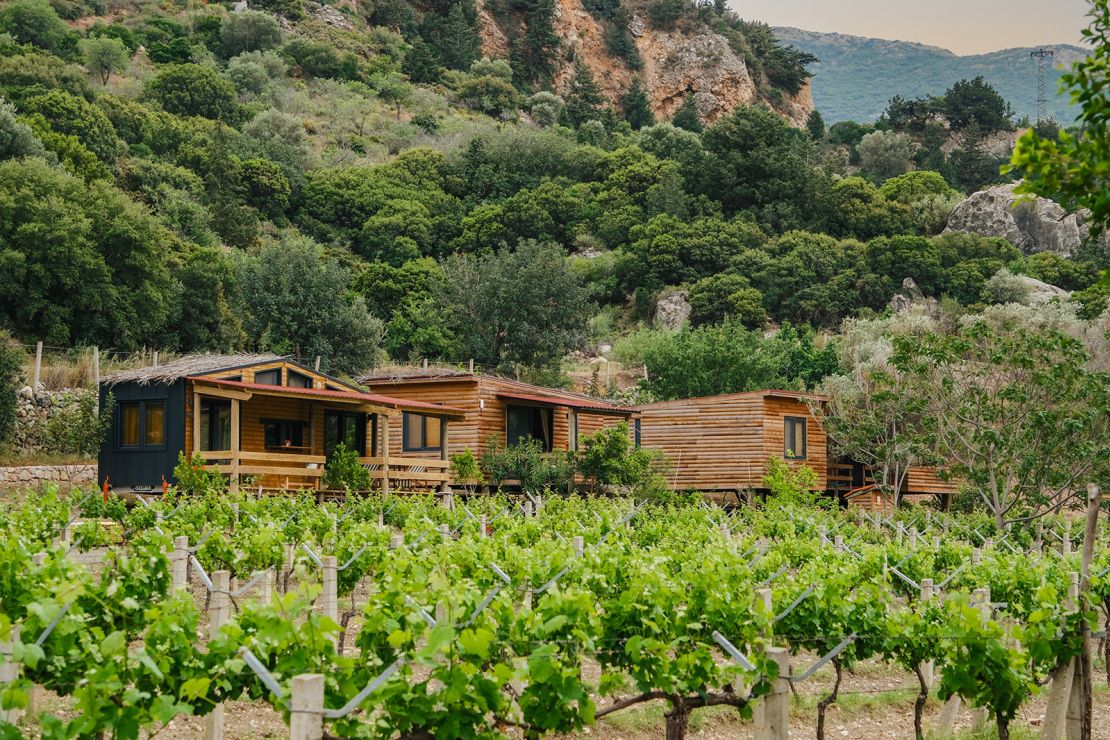
On the western tip of the peninsula and down an undeveloped road that cuts through the peaceful backwoods, Knidia Eco Farm is one of Datça’s best-kept secrets – a place to really delve into nature’s tranquility.
Founded in 2000 by Ali Somer, who left Istanbul’s urban chaos to become a farmer, the 12 acres of farm, vineyard and orchards began hosting guests in its four wooden huts and four stone houses in 2007. Meals are made almost entirely from ingredients grown in the Knidia garden and prepared on a wood fire. The nearby beach at Değirmenbükü is a haven of serenity.
“I think one of the most precious things here is its peacefulness,” says Somer. “The night sky is unadulterated, there are no artificial sounds or lights here, just the sounds of nature and the wind.
“Datça is one of the rare places in Turkey where you can encounter an Aegean landscape that hasn’t been disturbed for centuries.
“The protective laws have worked well here for years, and the rugged landscape has also prevented progression in terms of construction. I hope it will continue like this, that it will continue to be protected, that people will abide by these laws, that things will remain untouched.”
Ayça Boylu who runs the tango school Tango Kairos with her German dancing partner Axel Korf has also sought a more sedate way of life in Datça.
“A lot of people who moved to Datça share the same story,” she says. “They worked very hard and came to a point in their careers where they needed to change things, to slow down.”
With years of national and international experience, Boylu and Korf host classes and events, as well as take part in performances.
“Datça is a peninsula, but it’s more like an island, we’re very isolated and have our own way of life,” says Boylu. “They say, if you’re in a hurry, you shouldn’t be in Datça, because people here are relaxed. You’ll often find shops that are closed because the owner is at the beach, and that’s completely acceptable.”
Feride Yalav-Heckeroth is a freelance writer based between Istanbul and Lake Constance and the author of her own guidebook, The 500 Hidden Secrets of Istanbul. Her writing has been published in Kinfolk, Brownbook, The Travel Almanac, Wallpaper*, Travel + Leisure and Conde Nast Traveler.
